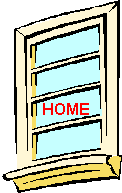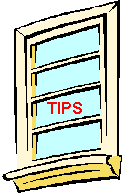Areas to
look at: INTERIOR AND EXTERIOR
( MDE update of HB1163,
10-01-01)
Check all painted
and varnished or poly coated areas to make
sure ALL paint is intact. ( Not peeling, chipping or cracking.)
Examples listed below, ( list is only a guide, keep in mind
everything may not be listed) . If it has a painted, stained,
varnished or polyurethaned surface it needs to be intact.
Window frames, Window sills,
Window wells (the area where window drops
down onto flat surface
Base boards, Walls, Ceilings, Floors. Doors and Door frames, Thresholds, porches, clothesline poles, fences,
Base boards, Walls, Ceilings, Floors. Doors and Door frames, Thresholds, porches, clothesline poles, fences,
Spoutings,
Downspouts, Soffit, Fascia, Porches, Steps, Any outbuildings &
structures accessible to tenant.
Includes Barns and Sheds and Garages.
Includes Barns and Sheds and Garages.
Vacuum carpets , shampoo if
needed. (Using
Hepa vacuum is recommended) Hepa bags can be put in most vacuums if
not hepa filtered.
Vinyl floors should be clean.
All floors are to be clean,
including baseboards.(if water dropped onto hard surface floor soaks
in, the floor needs coated with wax or poly.)
Kitchens and Bathrooms should have a smooth cleanable floor. NOT CARPET.
Kitchens and Bathrooms should have a smooth cleanable floor. NOT CARPET.
All rooms considered part of the living
space would be inspected, including laundry areas that are separate
from another room.(Basements & Attics if accessible to tenant) Ask about any in question!!
Correcting
areas of concern.
Clean area with Spic N' Span or Simple
Green or very LIGHT solution of TSP (do not use TSP on vinyl ).
Before any painting, if using TSP always
RINSE afterward with water. TSP is
not my most recommended product.
If scraping paint, mist with water
before scraping or sanding. Keep dust wet. It is strongly
recommended that you become certified as a Lead Paint Supervisor or
Worker if you are disturbing the paint.
Clean with paper towels and suggested
cleaners. (wiping one way, not back and forth)
Paint or in some cases cover wells with
aluminum coil stock and caulk around.
Whenever
touching up small areas of concern simply wipe clean before
painting over them.
Make sure when scraping or sanding to
cover the floor or ground area with plastic to be disposed of.
After painting allow paint to dry before lowering window or
shield with cardboard while lowering window. Dump dust from
cardboard into trash. Using wax paper between painted surfaces will
keep paint from sticking and can be used as a shield while lowering
windows. Wax paper also good when painting a door
that needs to be closed.
( keeps it from sticking)
( keeps it from sticking)
Seal broken or
worn areas in varnish or shellac with polyurethane. (Fast Drying
spray good for tracks of windows) Spritz of silicone spray to help
window glide after dry. Solid paraffin wax
rubbed on tracks helps with gliding.


